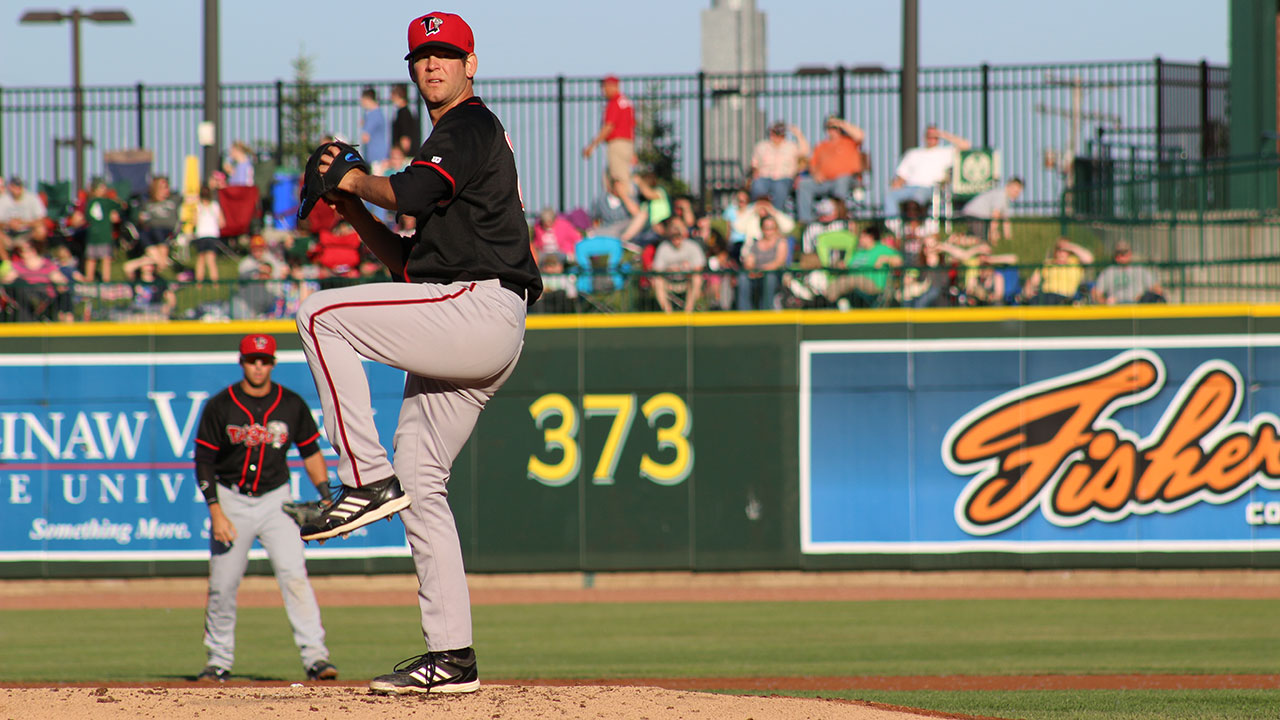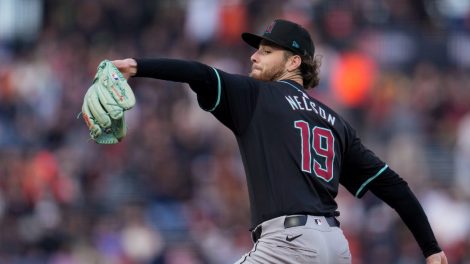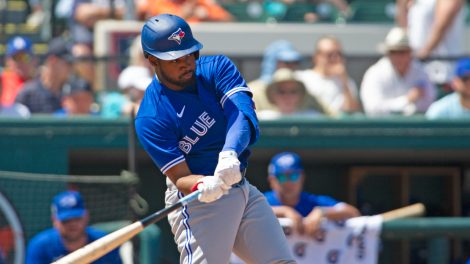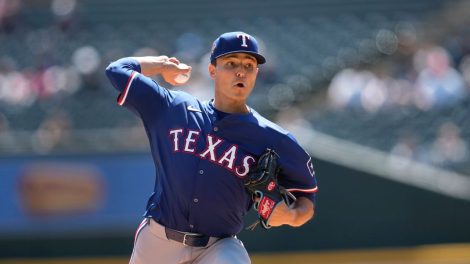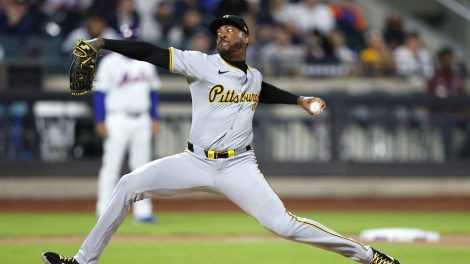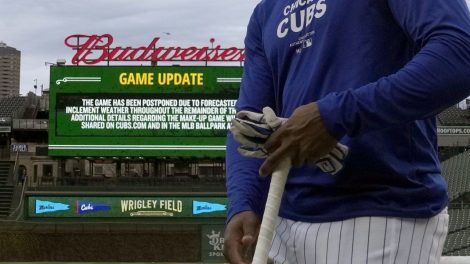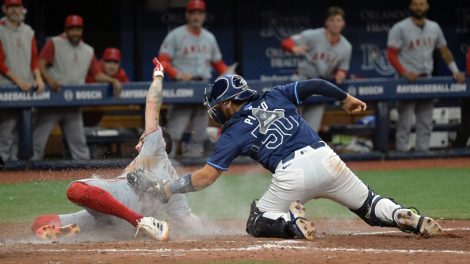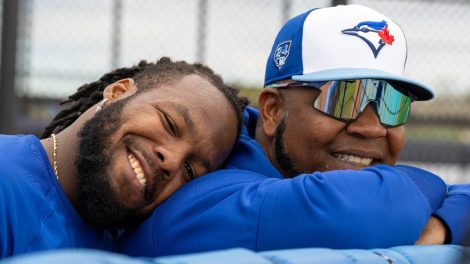LANSING – It’s three hours before first pitch on a muggy afternoon in Michigan, and already a crowd is gathering around the Lansing Lugnuts’ bullpen by the right field bleachers.
The entire pitching staff of the Toronto Blue Jays’ Class A farm team is surrounding Frank Viola III, the 30-year-old who is building a second chance in baseball around a pitch that refuses to be controlled – the wily, unpredictable knuckleball.
Just six months ago, nobody was watching when Viola practiced knucklers against a wall. Today, his oddball pitch is getting him noticed. Members of one of baseball’s most unique fraternities – including Jays’ starter R.A. Dickey, who helped Viola reinvent himself as a knuckleballer – are watching, too.
This June, the knuckleball gave Viola his first win in the minor leagues since 2005. With each inning, as he chases his dream of making it to the big leagues, it’s giving him something else, too: hope.
In March, the son of Minnesota Twins’ pitching great and 1988 Cy Young winner Frank Viola Jr. turned a brief tryout with the Jays into a minor league contract. They dispatched Viola to extended spring training, then to Lansing.
“I feel blessed for this opportunity,” said Viola, pausing occasionally to spit chewing tobacco on the dugout floor. “I’m getting another chance to do what I love. Having people say, ‘we believe in you,’ that’s just the icing on the cake. That’s what this second chance means to me.”
Viola’s first chance came ten years ago, when he tried to make it as a conventional pitcher, just like his dad. He was drafted by the Chicago White Sox, and had a decent debut season with the rookie-level Bristol White Sox, where he had a 5-2 record with a 3.82 ERA in 13 games.
Then he blew out his elbow. Tommy John surgery followed, then knee surgery, before the White Sox finally cut ties with Viola in 2007. Three years later, he tried again, this time pitching for the independent St. Paul Saints.
Dropped from the game he loved, Viola began selling vacation time shares, became a venture capitalist, started his own production company, even had a fishing show. But his life without baseball felt empty, he said. He spiraled downward, pushing people away, spending money recklessly, feeling alone and increasingly miserable.
“It was a big journey to try to find myself, but I wasn’t ready to be a man,” he said. “I was just hiding from the fact I had no idea who the hell I am or what made me happy.”
He realized he needed to be his own person, not some half-hearted version of Frank Viola Jr., forever living in his famous father’s shadow.
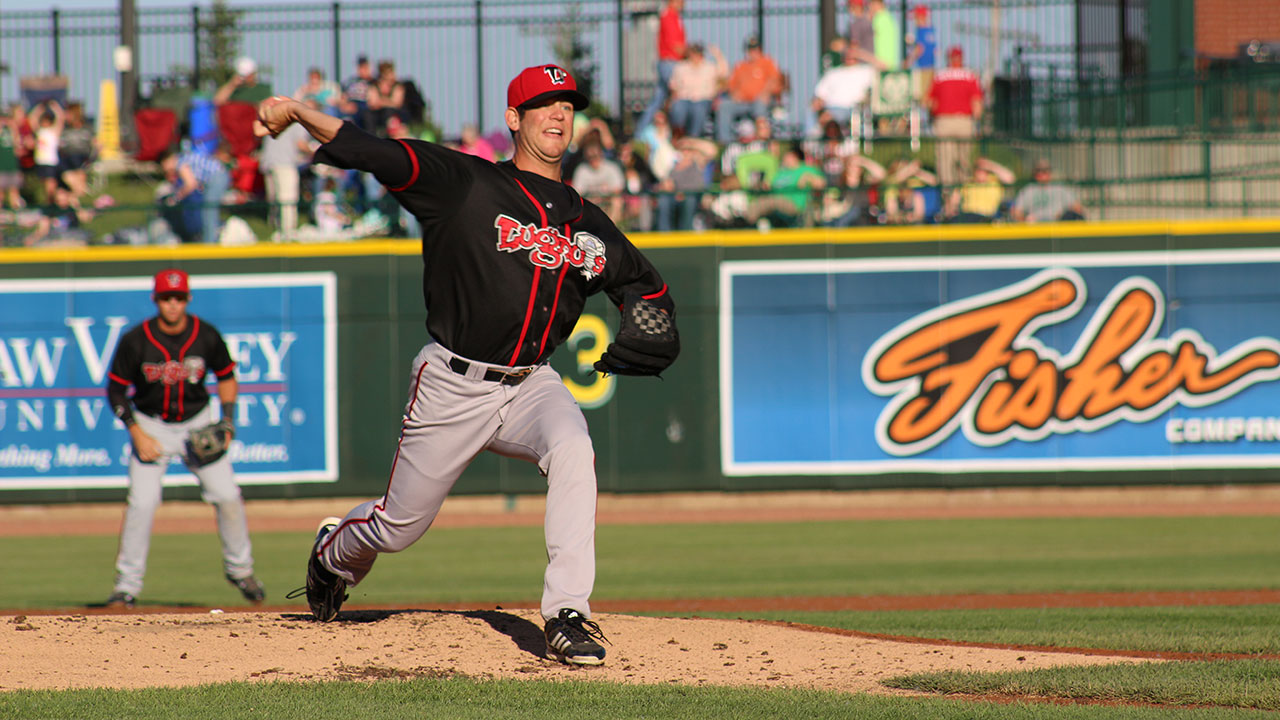
“My heart was always in baseball. I had a feeling in my heart that I left something there,” Viola said. “In my heart and my gut, I felt I had something to offer this game. I just didn’t know what it was… I guess I found myself with this knuckleball.”
Today, he’s the old man on a team of players not far removed from college or even high school. And he appreciates this second shot far more than he did the first time around.
“I tell these guys to work hard at it, because I know what it feels like to be cut,” he said. “If you don’t seize this opportunity, it’ll eat you up for the rest of your life.”
Viola’s bid to return to baseball got serious in January, when he went to Nashville to be mentored by Dickey. For six weeks, they attended church together and discussed the mysteries of baseball’s most beguiling pitch.
With Dickey’s help, Viola says he found something special. He joined a unique group of pitchers who embraced an erratic, slow pitch in a game that prizes power and accuracy. He sought out Tim Wakefield, Phil Niekro and Charlie Hough, and picked their brains, too.
“I feel like there’s so much in here I haven’t even touched yet. It gives me hope,” he said. “I like it because I can’t teach someone to throw 95 miles per hour. But I can teach you how to throw a ball with no spin.”
The knuckleball brought joy back to Viola’s life. He loves that it’s unpredictable, just like his own tumbling journey.
“If I’m doing the right things, I have absolutely no control over it. I have no idea if it’s going to go right, left, up, down. The ball is going to do what it’s going to do,” he said. “It’s kind of like life that way. You have no control over it, and that’s our biggest fear. But you have to accept that.”
Viola throws the knuckleball at three different speeds about 80 percent of the time, and mixes in a fastball in the mid-80s to keep hitters off-balance.
Daniel Klein has been given the unenviable task of trying to catch Viola’s darting knuckler for the Lugnuts, and had to track down a larger catcher’s mitt to do the job.
“It doesn’t get any easier for me. I can catch him a hundred times, and I’ll still miss him here and there because it’s extremely unpredictable,” Klein said. “He might try to throw it one way, and it’ll go the other. You just have to be alert back there and hope for the best.”
In five appearances in Lansing, Viola at times looked fully in control of an uncontrollable pitch before earning a promotion to the Class A advanced Dunedin Blue Jays. He didn’t give up a run in his first two starts for the Lugnuts, leaving batters baffled.
“The hitters have had a tough time. They’ll see something, and it’ll disappear and end up nowhere near where they thought it was,” Klein said. “When it’s working, it’s unhittable.”
Matt Dean, one of the Lugnuts’ corner infielders, says opposing hitters who manage to get on base are often left shaking their heads.
“They’ll say, ‘Man, he throws one that looks like a beach ball coming in, and he throws another that you can’t even touch,” Dean said.
The knuckleball can be humbling for its pitchers, too. It can be affected by the wind or a split fingernail, making a pitch that’s unhittable one day an easy offering the next.
In his third start for Lansing, Viola came back down to earth, giving up six runs, five hits and six walks without completing five innings, for his first loss.
His coaches say his progress will have its bumps, but they’re impressed with the overall speed of Viola’s development.
His command of the knuckleball was inconsistent when he first unveiled it for the Jays in March. Lately, the ball has been finishing more sharply rather than tumbling weakly as it crosses the plate.
“The improvement since spring training with that pitch has been night and day,” said Lansing’s pitching coach Vince Horsman, the Nova Scotia native who spent five seasons in the majors.
The knuckleball can be as varied as the men who have thrown it throughout baseball’s history. Viola needs to find his own version of the pitch that works for him, Horsman said.
“He’s trying to take his personality and infuse it into that pitch, so it will be his own and not compared to somebody else who throws that pitch,” he said.
Viola believes his knuckler is good enough to get him to the majors. No wonder he’s pitching with an urgency he didn’t have in his first stint in professional baseball.
“Like any guy who gets a second chance, you try to tell him there’s no timetable. But I know he feels he has to get there sooner rather than later,” Horsman said.
“I try to remind him not to treat every bad pitch like it’s life or death. If you start pitching like that, you’ve got the weight of the world on your shoulders… You have to just go out there and trust it, and let it fall where it may.”

